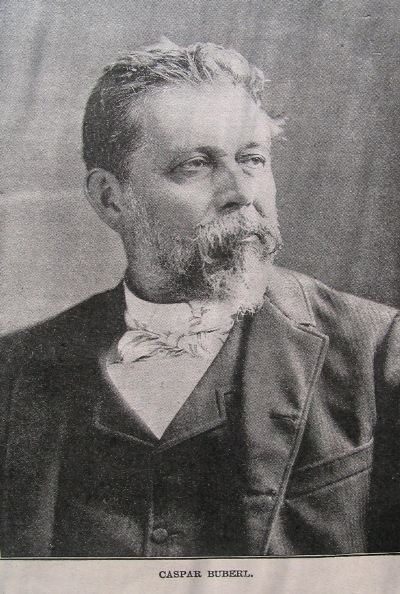Nationality American Name Caspar Buberl | Known for Sculpture | |
 | ||
People also search for Earl Cranston, Edward H. Hobson, John Hunt Morgan, James M. Shackelford, Ruth Cranston | ||
Caspar Buberl (1834 – August 22, 1899) was an American sculptor. He is best known for his Civil War monuments, for the terra cotta relief panels on the Garfield Memorial in Cleveland, Ohio (depicting the various stages of James Garfield's life), and for the 1,200-foot (370 m)-long frieze on the Pension Building in Washington, D.C..
Contents
- Biography
- Monuments on the Gettysburg battlefield
- Other Civil War monuments
- Other memorials and monuments
- Architectural sculpture
- References

Biography
Born in Königsberg, Bohemia, (now Kynšperk nad Ohří, Czech Republic), as a young man Buberl studied art in Prague and Vienna before immigrating to the United States in 1854 to train under sculptor Robert Eberhard Launitz. In 1882 Montgomery C. Meigs was chosen to design and construct the new Pension Building, now the National Building Museum, in Washington D. C. and, in doing so, broke away from the established Greco-Roman models that had been the basis of government buildings in Washington up until then, and was to continue to be following the Pension Building's completion. Meigs based his design on Italian Renaissance precedents, notably Rome's Palazzo Farnese and Plazzo della Cancelleria.
Included in his design was a 1,200-foot (370 m)-long sculptured frieze executed by Buberl. Since creating a work of sculpture of that size was well out of Meigs' budget, he had Buberl create 28 different scenes [totaling 69 feet (21 m) in length), which were then mixed and slightly modified to create the continuous parade that includes over 1,300 individual figures. Because of the way that the 28 sections were modified and intermixed, it is only by somewhat careful examination that the frieze reveals itself to be the same figures repeated some eighteen times. The sculpture includes infantry, navy, artillery, cavalry and medical components as well as a good deal of the supply and quartermaster functions, since Meigs had overseen the latter two functions during the Civil War.
Meigs insisted that any teamster included in the Quartermaster panel "must be a negro, a plantation slave, freed by war". This figure was ultimately to assume a position in the center, over the west entrance to the building.
Buberl created dozens of Civil War statues and monuments for various cities and states, including several for New York veterans associations to be placed on the Gettysburg Battlefield and a bronze bust of President Abraham Lincoln, which was recently sold for $5,800. His impressive New York State Monument crowns Cemetery Hill, and a number of individual memorials for specific regiments dot the battlefield.
He died in New York City.
